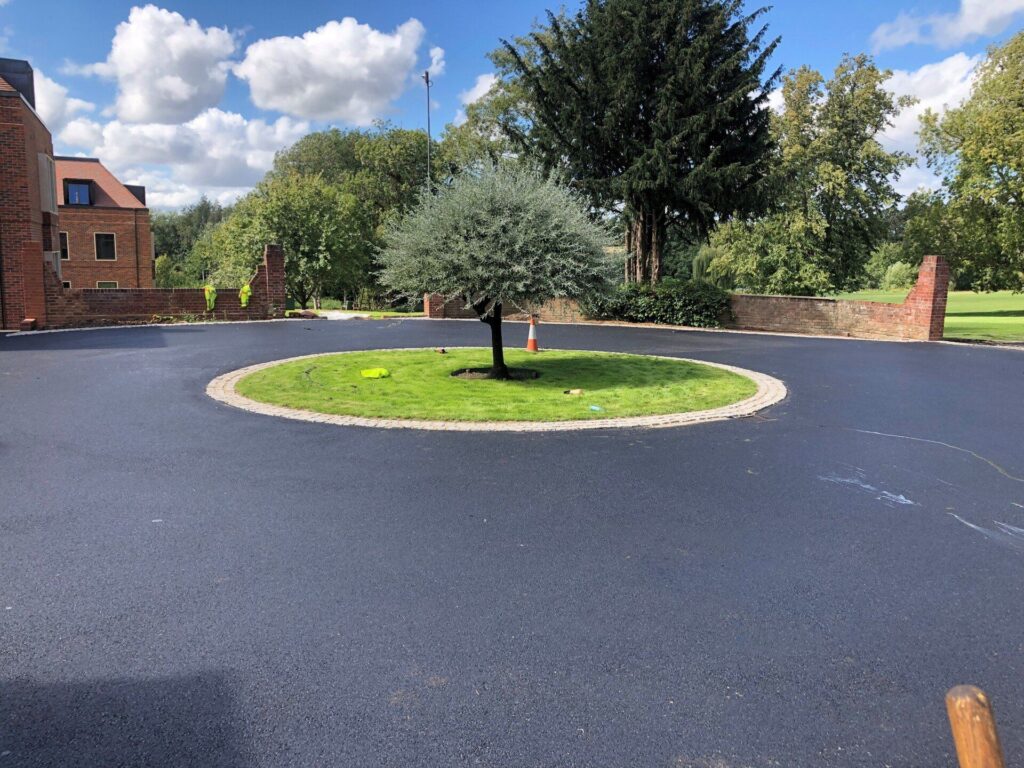If you spend much time on the UK’s roads, whether driving, cycling or on a motorbike, chances are you’ve been annoyed by a pothole or two. They seem to be absolutely everywhere, and can be not only very annoying but also extremely dangerous. Potholes are a menace to all sorts of people, in all sorts of places.
But what causes them? How can they be fixed? And what can be done to stop them coming back?
In this article we will answer all of these questions and more, exploring what potholes are, how they are formed, how they’re repaired, and how they can be prevented, leaving you a veritable pothole expert.
Potholes are holes which appear in the surface of roads, usually asphalt covered ones. They start as small cracks, but then expand into holes as wear and tear moves bits of the surface away. These holes can get up to a metre wide and around 10 centimetres deep if they’re left to their own devices with no repairs or intervention.
The word pothole was first used in 1826 to describe holes which appeared in natural rock formations and glaciers, and then was first recorded as being used to describe potholes as we know them, as holes in roads, in 1909.
Potholes can be very dangerous to road users, as well as people walking on pavements alongside roads. Huge numbers of accidents are caused by potholes every year in the UK, both as a direct result of the potholes and because of drivers and cyclists swerving to avoid them and hitting other cars, bikes or pedestrians.
Potholes always start off as small, innocent looking cracks in the surface of a road. These cracks can appear in a variety of different ways, including:
Shrinkage cracking appears in the presence of a certain soil called expansive clay subgrade soil, or because of very low temperatures.
Reflective cracking occurs when a new layer of asphalt has been laid over existing cracks, which eventually come back to the surface.
As a road surface gets older, it loses some of its elasticity and robustness over time. This can lead to cracks forming.
Wear and tear can have a significant impact on the longevity of roads and how quickly cracks start to appear, especially in heavy traffic areas.
When roads have to be dug up for access to carry out various utility works, the repairs to the road afterwards can lead to serious cracking if not done well.
Bad drainage can mean that water gets into the road quickly and stays there as it can’t drain away. This speeds up the whole pothole creation process, which relies heavily on water.
After the cracks appear, the trouble begins. Water gets into these cracks in the road surface when it rains, which in the UK is a lot! This water then seeps down and saturates the lower levels of the road, leaving it weakened. After this, traffic can easily break up the road around the cracks, breaking off chunks and leaving holes.
This whole process is accelerated massively when it gets colder. The water that gets into the cracks can freeze, expanding and making the cracks bigger, before melting again and weakening the road even further. These freeze thaw cycles can have a devastating effect on road surfaces, and are largely the reason why the UK has so many more potholes than a lot of other countries as temperatures can fluctuate just above and just below freezing so regularly.
There are lots of different methods used to repair potholes, with varying levels of success. The most commonly used of these methods include the following:
The throw and roll method is by far the easiest and as such is probably the most commonly used. It involves simply filling the hole with some new material and relying on cars driving over the top of it to compact it down.
This is very similar to the above, but in this case the new asphalt material is compressed down using a heavy duty roller.
The cold lay method involves building up layers of cold lay material gradually over time, until the hole is completely filled in and sits flush with the surface of the rest of the road.
The full replacement method involves removing the section of road surrounding the pothole and rebuilding it completely. It’s the most complicated method but also generally the most effective.
Pothole repair is a never ending cycle, but more can be done to prevent them from forming in the first place, including:
More regular and thorough inspections of roads would allow local councils to identify places that need to be repaired before they become dangerous potholes.
Resurfacing entire sections of road instead of just patching up potholes is a much more efficient way of preventing the formation of new holes.
Keeping ditches and drainage systems surrounding roads clear can have a huge impact on the longevity of a stretch of road.
It’s easier said than done, but reducing the amount of traffic which passes over a road can significantly reduce the wear and tear and general pressure it’s under, keeping potholes under control for much longer.
If you need help managing potholes, feel free to get in touch with us at Hazel & Jefferies. We’ll be more than happy to put our expertise behind you and help you in any way we can.

